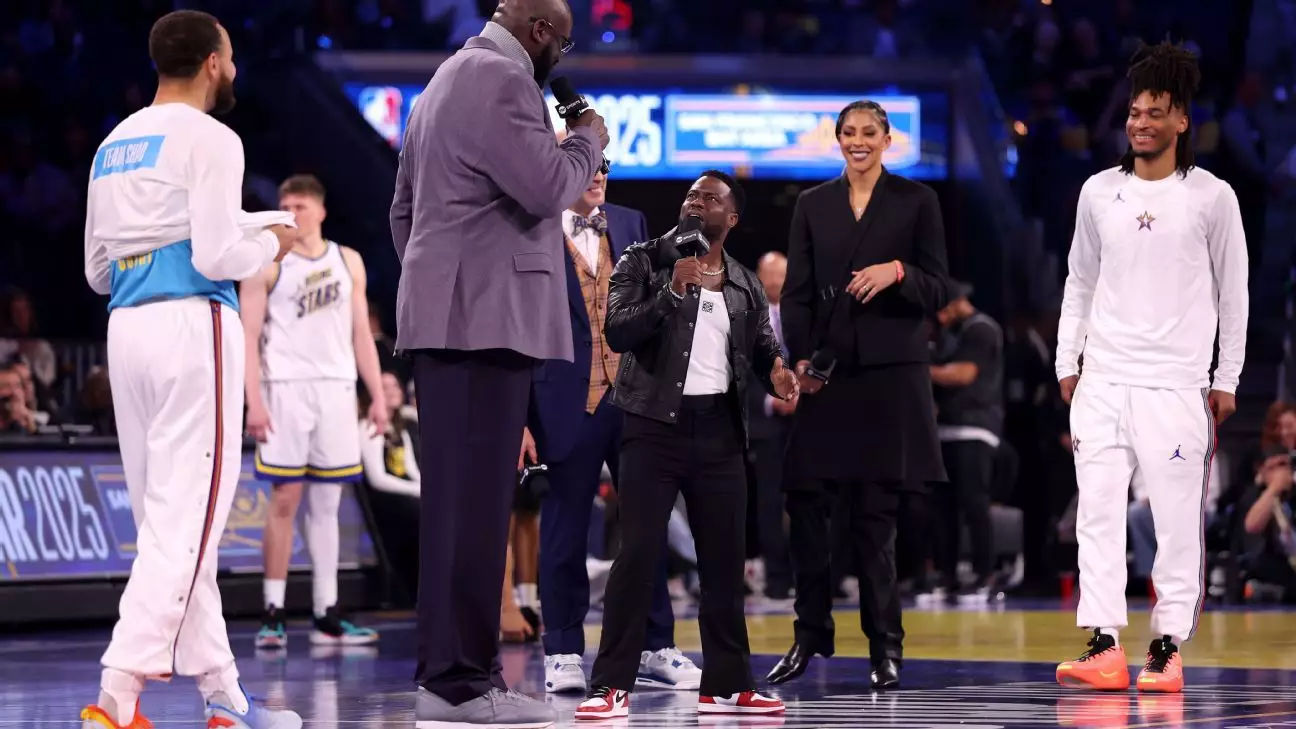The NBA All-Star Game is traditionally a much-anticipated event showcasing the league’s top talent in a celebratory environment. However, this year, the introduction of a new tournament format stirred mixed reactions among players and fans alike. The change aimed to address some criticisms of past All-Star Games but raised its own set of concerns, particularly regarding pacing and gameplay interruptions.
This year, the All-Star Game adopted a four-team, single-elimination format, contrasting sharply with the time-honored East vs. West model. The teams were drafted by notable NBA analysts, reflecting a desire to mix players across conferences and expand engagement. The competing teams included Chuck’s Global Stars, Kenny’s Young Stars, Shaq’s OGs, and Candace’s Rising Stars, with a target score of 40 points per round. On paper, the model promised a more competitive environment and an exciting twist to the weekend festivities. In practice, however, the approach left players yearning for the streamlined gameplay of yesteryears.
Players, notably Trae Young, expressed dissatisfaction with the excessive breaks in the action. These pauses, punctuated by comedic interludes from entertainer Kevin Hart, drew ire for disrupting the game’s flow. Young acknowledged the novelty of the new format but lamented the “stop-and-go” nature of it, suggesting that these interruptions seemed designed primarily to bolster television ratings rather than enhance the on-court experience. Such sentiments reflected a broader concern about prioritizing entertainment over the intensity of competition.
During the championship match, Shaq’s OGs, featuring the likes of Stephen Curry and Kevin Durant, managed to secure a victory over Chuck’s Global Stars. Despite the win, discussions surrounding the format highlighted a consensus among players for fewer interruptions. Shai Gilgeous-Alexander, another star of the game, echoed the frustrations of his peers, voicing his desire for a more uninterrupted playing experience. He recognized the competitive spirit on display but insisted that a better balance between engaging gameplay and breaks was essential for maintaining player enthusiasm.
Defending champions of traditional game dynamics, such as Draymond Green, were vocal in critiquing the integration of first- and second-year players into the All-Star format. These players felt that participation in the All-Star Game should be reserved for those who have proven themselves over time, rather than introducing emerging talents into a setting traditionally meant for established stars. Green’s remarks illuminated concerns regarding the dilution of a prestigious event as it grapples with declining viewership.
In addition to issues with gameplay, the absence of marquee names like LeBron James and Giannis Antetokounmpo colored the weekend’s atmosphere. The absence of such iconic players contributed to a sense of diminished star power, leading players and analysts to speculate that the tournament could feel less significant without a full cast of the NBA’s brightest stars.
The first semifinal saw Chuck’s Global Stars narrowly defeating Kenny’s Young Stars, propelling them forward amidst a backdrop of competitive spirit, though it did not gloss over the issues of game structure. Meanwhile, Shaq’s OGs advanced through their semifinal matchup, but the question remained whether the lack of prolonged competitive play due to breaks diminished the overall allure of these individual showdowns.
As players expressed their perspectives on the evolving All-Star format, a critical thread emerged: the necessity for the NBA to find a balance. While changing the format was a brave attempt to breathe new life into the All-Star experience, reactions made it clear that a more engaging on-court experience must prevail. Both players and fans crave an event that reflects the competitive nature of basketball while remaining entertaining and dynamic.
In light of these discussions, it is imperative that NBA leadership, including Commissioner Adam Silver, takes heed of player feedback as they contemplate the future of the All-Star Game. Continuously exploring novel concepts is essential, yet maintaining core aspects that resonate with players and fans remains paramount. By marrying innovation with tradition, the NBA can foster an All-Star environment that celebrates talent and intensity while also captivating audiences. The challenge lies in striking the right balance for what is, after all, a cherished celebration of basketball excellence.
The recent All-Star Game highlighted both the potential for innovative change within the NBA and the importance of addressing the underlying elements that make this event special. The evolution of the game should be a collaborative effort, ensuring the voices of players both inform and enhance the future of this beloved spectacle.


Leave a Reply